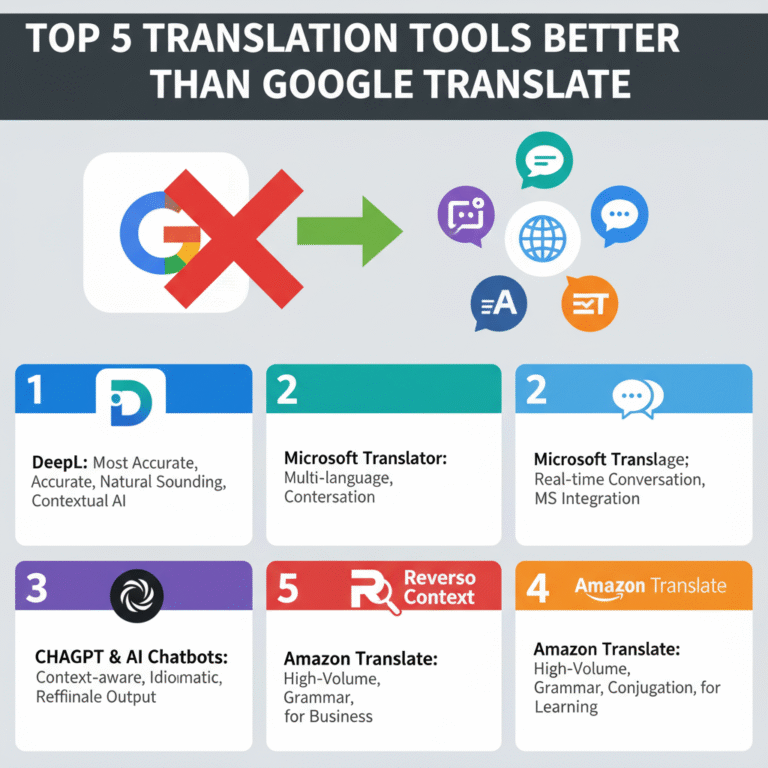
Introduction
Have you ever dreamed of speaking another language but felt limited because you couldn’t attend classes? You’re not alone. Millions of people want to learn a new language but think they need expensive courses, teachers, or formal training. The truth is, you can absolutely learn a new language without classes—all you need is motivation, consistency, and smart methods.
Think of language learning like planting a tree. You don’t need a fancy gardener or expensive tools—just the right soil (resources), daily sunlight (practice), and water (motivation). Over time, your tree will grow strong. Similarly, with small daily steps, you can become fluent without stepping into a classroom.
In this article, we’ll explore practical, free, and enjoyable ways to learn a language on your own.
Table of Contents
| Sr# | Headings |
|---|---|
| 1 | Why Learn a New Language Without Classes? |
| 2 | The Power of Self-Learning |
| 3 | Setting Clear Goals Before You Start |
| 4 | Using Language Learning Apps and Tools |
| 5 | Immersing Yourself Through Media |
| 6 | The Role of Music, Movies, and Podcasts |
| 7 | Reading Made Simple: Books, Blogs, and News |
| 8 | Speaking Practice Without a Teacher |
| 9 | Finding Language Partners Online |
| 10 | Using Social Media for Language Practice |
| 11 | Writing in Your Target Language |
| 12 | The Importance of Daily Practice |
| 13 | Turning Mistakes Into Learning Opportunities |
| 14 | Staying Motivated on Your Journey |
| 15 | Conclusion |
1. Why Learn a New Language Without Classes?
Classes can be expensive, time-consuming, and sometimes even boring. But learning on your own puts you in control. You decide what to learn, how fast to go, and which resources suit you best.
Besides saving money, self-learning builds independence and problem-solving skills. You’ll also realize that real-world resources like apps, podcasts, and conversations are often more useful than traditional textbooks.
2. The Power of Self-Learning
Self-learning isn’t just about avoiding classes—it’s about building confidence. When you figure things out by yourself, every new word or phrase feels like a personal victory. This sense of achievement motivates you to keep going.
Think of it like riding a bicycle without training wheels. Scary at first, but once you get the balance, you’ll never forget.
3. Setting Clear Goals Before You Start
Before diving in, ask yourself: Why do I want to learn this language? Is it for travel, work, studies, or personal growth?
Set SMART goals:
- Specific: “I want to hold a 10-minute conversation in Spanish.”
- Measurable: “I’ll learn 20 new words per week.”
- Achievable: Start with small steps, not fluency overnight.
- Relevant: Focus on words and topics you’ll actually use.
- Time-bound: “I’ll reach conversational level in 6 months.”
4. Using Language Learning Apps and Tools
Today, you don’t need classes when apps like Duolingo, Memrise, Babbel, or Anki are at your fingertips. These apps gamify the process, making learning feel like a fun challenge rather than homework.
- Flashcards (Anki): Great for vocabulary building.
- Language exchanges (HelloTalk, Tandem): Chat with real people.
- Voice recognition: Apps correct your pronunciation instantly.
5. Immersing Yourself Through Media
The best way to learn a language is by living it—even virtually. Surround yourself with the language daily:
- Change your phone’s language settings.
- Follow foreign YouTube channels.
- Watch TV shows or cartoons in your target language.
The more you immerse, the more natural the language feels.
6. The Role of Music, Movies, and Podcasts
Music and movies aren’t just entertainment—they’re language goldmines.
- Songs: Lyrics help you pick up slang and common expressions.
- Movies/Series: Subtitles make learning easier. Start with your native language, then switch to the target language.
- Podcasts: Perfect for listening practice while commuting or exercising.
Imagine learning French while watching Lupin or picking up Spanish by listening to Reggaeton—fun and educational!
7. Reading Made Simple: Books, Blogs, and News
Start small—children’s books are excellent because they use simple words and repetition. Gradually move to blogs, magazines, and newspapers.
Tips for reading:
- Use a dictionary app for quick lookups.
- Highlight new words.
- Re-read stories to reinforce vocabulary.
8. Speaking Practice Without a Teacher
Speaking is often the scariest part, but you don’t need a teacher to practice.
- Talk to yourself: Describe what you’re doing in the new language.
- Shadowing technique: Repeat sentences from podcasts or movies in real time.
- Record yourself: Compare your pronunciation with native speakers.
Remember, it’s not about sounding perfect—it’s about being understood.
9. Finding Language Partners Online
You don’t need classes when you have language partners. Many websites and apps connect learners worldwide.
- HelloTalk, Speaky, Tandem: Free platforms to chat with native speakers.
- Video calls: Practicing real conversations builds confidence.
It’s like having a study buddy, except they’re from another country.
10. Using Social Media for Language Practice
Social media is more than memes and reels—it’s a free classroom!
- Follow pages, influencers, and groups in your target language.
- Comment in that language, even if it’s short phrases.
- Join Facebook groups or Reddit communities for learners.
11. Writing in Your Target Language
Writing improves memory and grammar. Start with a diary:
- Write about your day in the new language.
- Post on social media in your target language.
- Join online forums where people correct your writing.
Over time, you’ll notice patterns and gain confidence.
12. The Importance of Daily Practice
Consistency beats intensity. Spending 15–20 minutes daily is better than cramming for 3 hours once a week.
Just like brushing your teeth, make language learning a habit.
13. Turning Mistakes Into Learning Opportunities
Don’t fear mistakes—they’re proof you’re trying. Even native speakers slip up. The key is to learn and move forward.
Think of mistakes as stepping stones across a river. Without them, you’ll never reach the other side.
14. Staying Motivated on Your Journey
Motivation fades, but discipline keeps you going. Here’s how to stay inspired:
- Celebrate small wins (like ordering food in your new language).
- Track your progress with journals or apps.
- Reward yourself when you hit milestones.
15. Conclusion
Learning a new language without classes is absolutely possible. With the right resources, daily practice, and a bit of creativity, you can achieve fluency from the comfort of your home. Remember, the journey is just as exciting as the destination. So start today, take small steps, and soon you’ll surprise yourself with how much you’ve learned.
FAQs
1. Can I really become fluent without taking classes?
Yes! Many people achieve fluency through self-study, immersion, and daily practice without ever attending formal classes.
2. How long does it take to learn a new language without classes?
It depends on the language and your consistency. With 30 minutes daily, you can reach conversational level in 6–12 months.
3. What’s the best free method to learn a new language?
Immersion—using apps, media, and social interactions—is the most effective free method.
4. How can I practice speaking if I don’t know any native speakers?
Use apps like Tandem or HelloTalk to connect with learners and native speakers worldwide.
5. Is it harder to learn without a teacher?
Not necessarily. It requires self-discipline, but it also gives you flexibility and control over your learning pace.







